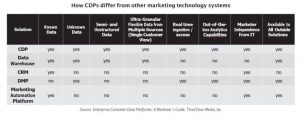The gig economy is empowerment. This new business paradigm empowers individuals to better shape their own destiny and leverage their existing assets to their benefit.
-John McAfee, Founder of McAfee
Last year the global Gig Economy reached USD 4.5 Trillion. The rise of the Gig Economy has been catapulted by the emergence of two-sided marketplaces like Upwork, Fiverr, YOSS, Axiom, etc. In 2018, the B2B Human Cloud (two-sided market places for labor for organizations) grew by 22%
The reasons behind the rise of the two-sided market places can be attributed to the following factors:
- The growth of the digital era presents an opportunity for people to find jobs as per their skillset irrespective of demographic factors. In fact, nearly a third of certain gig workers in the US (1099-MISC contractors) at companies are over age 55.
- The rising cost of living has forced the average office-goer to find multiple work options beyond their 9-5 jobs.
- The emergence of Gig Economy workers beyond the creative domains like IT services.
- In a digital world, technology innovations have led to the need for reskilling the existing workforce at a faster pace than ever before, which can mean huge costs and time investments for the organizations. In this scenario, more and more enterprises are hiring contractual or project workers.
Two-sided marketplaces redefining the role of HR
Aside from payroll management, traditionally, the role of HR teams has been restricted to risk mitigation and taking reactive measures- addressing employee issues, resource planning, etc. The need for reskilling employees at a faster pace has also expanded their role to management and planning of L & D (Learning and Development) of the resources. With the rise of two-sided market places, HRs today have the opportunity to widen their role to a more strategic one and delivering quantifiable results for businesses by taking care skills gap of an enterprise in an optimized cost.
Key factors that make a two-sided labor marketplace successful
Platforms like Uber, Lyft or Airbnb have laid the path in terms of user experiences that make a two-sided marketplace successful. B2B Human Cloud can take a leaf from their book and create successful platforms. For instance, Uber matches buyers and suppliers basis proximity of the location. Similarly, Airbnb curates suppliers by identifying them on behavioral metrics and highlight things like – ‘this host is known for being friendly’.
Some of the factors which should be considered while creating such market places are:
- Creating supply and demand: two-sided marketplaces should figure out how to address both beforehand as they feed into each other. Trying to grapple with them after launch would be stressful. Something which Uber did, they seeded demand and also kept the supply of the cabs accordingly.
- Easing out the payment structure: An average payout structure on such platforms can take somewhere between 30-90 days depending on the enterprise’s financial policies. Such long cycles of payment can be inconvenient for freelancers. It is critical that a two-sided market place eases out this cycle and also the channel of the payments through their platform.
- Ease-of-use: Simplifying the navigation for both the hirees and the freelancers plays an important role. The experience of hiring freelancers should be as easy as buying experience of portals like Amazon, by curating relevant talent and building trust through reviews, ratings, etc.
- Risk mitigation: For HR, procurement and legal teams it is important that these online marketplaces mitigate risk. For example, through classifications like the 1099 forms for freelancers as in the US. If you are engaging someone from a gig economy it is important to ensure that all relevant documents are in place – from registration to insurance. Similarly, it is important that these marketplaces ensure the protection of the freelancers’ work one of the ways of doing it is by using Escrow, a contractual arrangement where an Escrow agent will ensure that payments are received and disbursed as per the initial agreement between the parties, in this case, the hiree and the freelancers.
Emerging technologies that will redefine two-sided market places
Several technologies like Artificial Intelligence, Machine Learning and Blockchain can have an impact on reshaping the future of the two-sided marketplaces.
AI/ML will play a critical role in resource profiling, finding matches basis skills, recommendations, etc. As technology evolves users will expect to get more customized experiences and AI/ML will be instrumental in providing that.
Blockchain with its shared ledger system can play a role in building a transparent and secure model for such market places.
“My father had a job in his life, I will have six jobs during my life, and my children will have six jobs at the same time. —Robin Chase, Founder of ZIPCAR ”
(A quote from the book by Diane Mulcahy, The gig economy: The complete guide to getting a better job, having more free time and finance the life you want!)
With the changing attitude of the current workforce towards a job, Gig Economy and two-sided market places are here to stay. In fact, the Gig Economy is expected to reach 50.9% by 2027. In this scenario, we are sure to see the transformation of work to a more flexible, efficient and cost-effective system.
**Some of the excerpts and information mentioned in this article have been referred from my article on Gig Economy published here.
Business & Finance Articles on Business 2 Community
(51)







